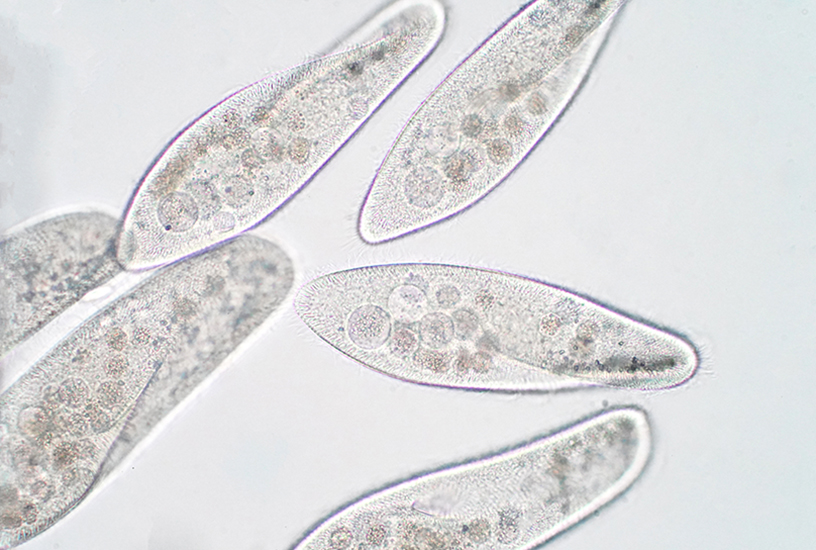Protozoa- Exceeding the Speed Limit

AUSTRALIAN CURRICULUM ALIGNMENT:
-
Classification helps organise the diverse group of organisms
- Classifying using hierarchical systems such as kingdom, phylum, class, order, family, genus, species
BACKGROUND:
Many protozoans are fast moving, especially Ciliates, which are particularly fast and difficult to observe under a microscope. In order to observe and study these organisms, biologists have to ‘slow’ them down. Towards this aim, protozoan samples are placed on a slide and a viscous solution, such as Methyl Cellulose or Protoslo is added. These solutions effectively restrict the movement of the organisms’ cilia and flagella.
Methyl Cellulose is a grey/white powder that reacts with water to form a viscous solution that is similar to the consistency of syrup. A dilute solution of 3% makes it difficult for microscopic organisms to move but maintains their osmotic balance to ensure the organisms are not harmed. A Methyl Cellulose solution maintains the natural appearance and behaviour of organisms, whilst slowing the movement. A Protoslo solution works in the same way and may also be used in this prac. Protoslo comes in a dropper bottle and is ready for use with no mixing required.
METHOD- STUDENT ACTIVITY:
- Make a circular ring of the methyl cellulose solution in the centre of a clean microscope slide using a plastic pipette.
- Place a sample of the organism culture in the centre of the methyl cellulose ring using a pipette.
- Partially mix the methyl cellulose and culture by gently pressing a coverslip over the microscope slide.
- Using your microscope, observe how the organisms behave immersed in the methyl cellulose.
- * If using Protoslo, simply add 1-2 drops directly onto the culture sample on the slide, and place a coverslip over the top.
OBSERVATION AND RESULTS
Using the diameter measurement of the microscope field, students can calculate the protozoan’s speed in km/ph. Instruct students to use a stopwatch to time the ciliate crossing the microscope field. Students will find the organisms move surprisingly fast and will be able to compare the time it takes an organism to move the same distance through a Methyl Cellulose/Protoslo solution.
